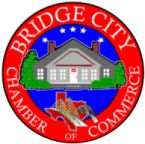
Embracing the Diversity Within
As I stroll through the bustling streets of Bridge City, I can’t help but marvel at the vibrant tapestry of cultures, backgrounds, and perspectives that make up this thriving community. From the colorful murals adorning the walls to the diverse array of businesses lining the streets, it’s clear that this city celebrates its rich diversity. Yet, when it comes to the workplace, have we truly unlocked the full potential of this inclusive landscape?
As a diversity, equity, and inclusion (DEI) professional, I’ve had the privilege of witnessing the seismic shifts that the working world has undergone, particularly in the wake of the pandemic. The transition to hybrid work arrangements has sparked a myriad of emotions, experiences, and concerns among employees. And it’s within this evolving landscape that we must navigate the path towards true inclusivity.
Embracing the Hybrid Landscape
The shift to remote work during the pandemic was a lifeline for many, providing the flexibility to balance professional responsibilities with personal needs. Take Joan, a dedicated Millennial employee and mother of two, who found solace in the newfound freedom to care for her young children and elderly parents. For her, this wasn’t just about convenience – it was about survival.
However, as the world began to reopen, the return to the office became inevitable. And with it came a wave of anxiety and frustration from employees who had grown accustomed to the flexibility of remote work. One of my clients, John, a Gen-Xer with a passion for community engagement, was vocal about his concerns. “If remote work was successful during the pandemic, why can’t it continue?” he argued, believing that a flexible work arrangement was not only fair but also aligned with his values of diversity and inclusion.
Navigating the Challenges of Hybrid Work
As I delved deeper into the experiences of my clients, I encountered a range of concerns and objections to the hybrid work model. Some leaders worried about issues of inequality, team cohesion, and bias – fears that, if left unaddressed, could undermine the very essence of an inclusive workplace.
The role of compassionate leadership becomes paramount in navigating these challenges. By addressing these concerns with empathy, transparency, and a steadfast commitment to DEI principles, we can create a work environment that accommodates the diverse needs and aspirations of our employees.
Strategies for Inclusive Hybrid Work
-
Flexible Policies: Encourage organizations to adopt flexible policies that allow employees to choose their work arrangements based on their individual circumstances. This could include options for flexible schedules, reduced commute time, and performance-based assessments.
-
Feedback Mechanisms: Establish feedback mechanisms that give employees a platform to voice their concerns and suggest improvements. This not only empowers them to be active participants in the process but also helps to build trust and buy-in.
-
Inclusivity Training: Provide training that fosters inclusivity and empathy among employees and leaders, equipping them with the tools to navigate the complexities of hybrid work and create a culture of belonging.
-
Mentoring Programs: Connecting experienced employees with younger ones can foster a culture of support and understanding, breaking down silos and creating a sense of community.
Embracing the Beauty of Diversity
As a DEI professional, I’ve learned that true equity comes from recognizing the unique strengths and challenges of each individual. By offering options rather than imposing procedures, we can empower employees to make choices that align with their needs. It’s not about replicating the past or imposing a single solution – it’s about recognizing the beauty of our differences and allowing everyone to flourish.
In the end, it’s not just about work – it’s about life. It’s about enabling Joan to care for her family while pursuing her career, empowering John to engage with his community and advocate for DEI causes, and allowing Allison to live in her dream home with her expanded family. Together, we can build bridges that lead us to a more equitable future, where belonging is not just a buzzword but a lived experience that enriches the lives of individuals and communities alike.
Bridge City is a shining example of what can be achieved when we embrace the diversity within. Let’s continue to lead the way, one inclusive step at a time.


